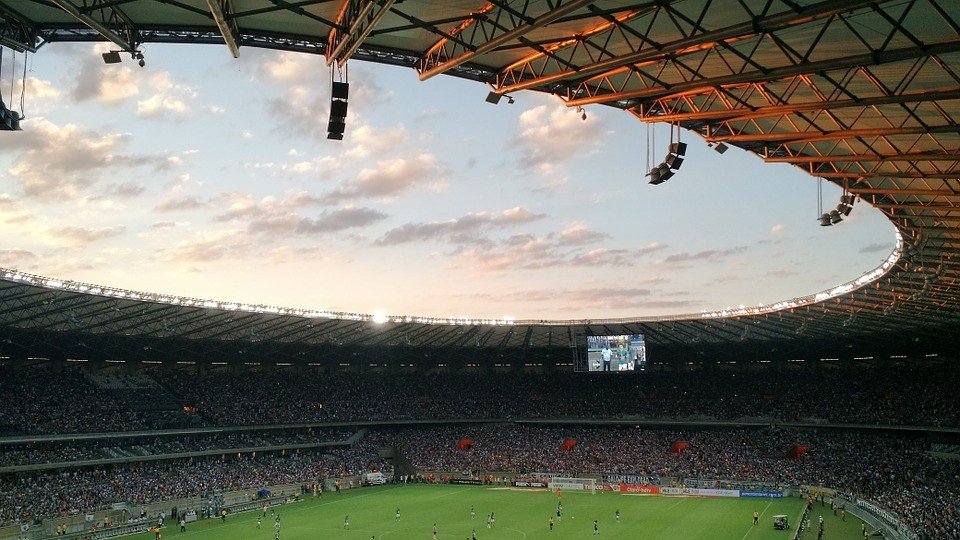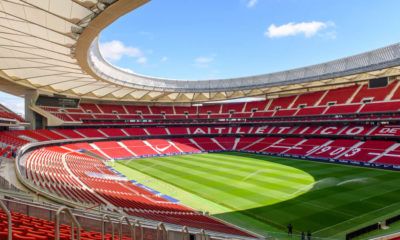Business
Premier League-English Football League gap widens after record TV rights deal
The disparity between the Premier League and the English Football League is now widening. Could the latter be further left behind?

The gap between Premier League (PL) and English Football League (EFL) clubs after a turnover of TV rights deal has now reached £133 million, a year after the turnover’s completion.
This gap has been growing every season from 2014 to 2016, and then it almost tripled by 2017. And this is all without counting the sponsorship gap as well, where single lucrative casino sponsors for the top teams can outstip the combined sponsorships of others. This resulted in some Championship clubs looking for ways to offset what’s considered to be a “two-year gamble” and conduct promotions without violating any of the spending rules.
According to BBC, the EFL said that there’s clearly a “competitive balance” between the two leagues. It also said that all three clubs promoted in the Championship during the 2016-2017 season (Newcastle, Brighton and Huddersfield) have all managed to survive the Premier League’s last term. Middlesbrough, on the other hand, entered the playoffs, Sutherland relegated, and Hull City came in at 18th place.
Where’s the gap?
When the Premier League sold the domestic television rights to its games for £5.136 billion, some analysts knew that the impact of the deal can only be felt during the 2016-2017 season. Based on BBC’s report, the following are conclusive data of what the turnover brought about in the last four years.
First, the £5 billion deal is 71 percent above previous other deals offered to PL. This also means that the average turnover among PL members was £133 million higher compared to the Championships.
Next, at least 14 out of the 23 Championship clubs shelled out more than 100 percent of their turnover income on staff costs last year. This included players, coaches, administrators and management.
Based on the report, the top three Championship clubs that spent the most on staff in 2017 are Blackburn Rovers, Brighton & Hove Albion and Huddersfield Town.
Now, sometime between 2014 and 2017, the Championship clubs’ median average turnover gained an additional £18.9 million, rising from £4.8 million to £23.7 million, and League One added £1.9 million, reaching £6.3 million. League Two, on the other hand, lost £300,000 to £3.2 million.
Premier League Executive Chairman Richard Scudamore, who is believed to be its highest-paid director, is said to have also received £2.5 million in “broadcasting bonuses” by the end of 2016 when the record TV rights deal was signed. This was more than the amount which League One and League Two clubs increased turnovers for the 2014-2017 seasons.

Some sports enthusiasts did not anticipate the growth of the Premier League. (Source)
The future of Premier League
Now, what could this mean? According to University of Liverpool’s football finance expert, Kieran Maguire, this significantly showed that the Championship clubs’ income from broadcasters “pales into significance” compared to the Premier League.
This is a surprise development to sports enthusiasts who thought that the PL won’t reach its current growth rate.
Former Chelsea and Derby County CEO Trevor Birch said that the Premier League’s progress is unexpected. Meanwhile, the EFL stated that there has been an acknowledgment “that there is a significant disparity in broadcast income between clubs in the top two divisions in England.”
However, the EFL also mentioned that its clubs’ profits “continued to increase through club-generated income, improved central contracts and as a result of EFL-negotiated solidarity payments.”
Furthermore, the sale of EFL’s broadcasting rights, just like PL, would also increase current revenues by as much as 36 percent for the 2019-2020 season. This is good news for EFL clubs wondering about long-term stability.
Back in 2014, EFL CEO Shaun Harvey already anticipated the gap between these leagues, even saying that the winner of the second-tier play-off final would be receiving the same amount from one season of PL compared to “playing in the Championship for the next 30 years.”
The EFL suffered from a crushing £1 billion debt back in 2014, which prompted Championship clubs to work on fair play rules.
Be that as it may, the spending limits established for the protection of the clubs’ futures in terms of profitability and sustainability, which lets them to compensate for a loss worth £39 million in three years, also meant that clubs are gambling to make “purchases” that will cover most of their promotion in the next years. This includes tapping players and offering high wages so that they could bank on the player’s marketability and promotion.
What’s not good about this plan though is that it might entail the need for another retrenchment just to “afford” payment of players and abide by the league’s spending rules. Some analysts are calling this move of the Championship clubs as “over-ambitious.”

-

 Crowdfunding2 weeks ago
Crowdfunding2 weeks agoFlower Burger Launches Crowdfunding to Fuel Growth in Booming Plant-Based Market
-

 Business5 days ago
Business5 days agoTopRanked.io Weekly Affiliate Digest: What’s Hot in Affiliate Marketing [1xBet + FIFA World Cup]
-

 Business2 weeks ago
Business2 weeks agoThe TopRanked.io Weekly Digest: What’s Hot in Affiliate Marketing [K4G Affiliates Review]
-

 Crypto6 hours ago
Crypto6 hours agoBitMine Surpasses 4 Million ETH Holdings Amid Market Volatility

























You must be logged in to post a comment Login